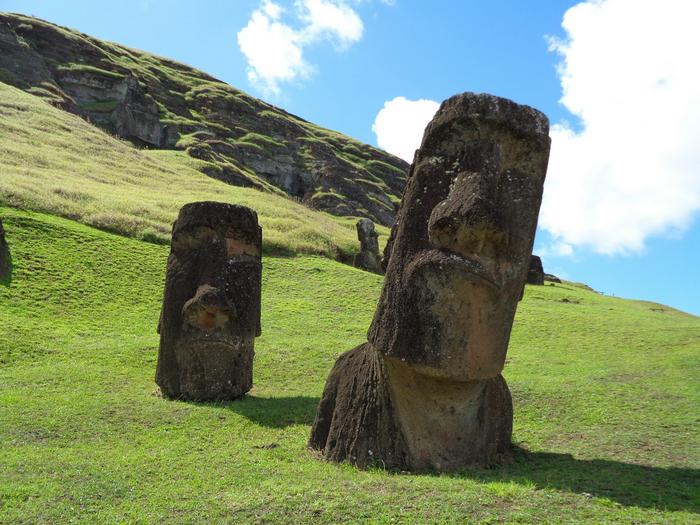A new study challenges the popular idea that the inhabitants of Rapa Nui, commonly known as Easter Island, committed “ecocide” by exhausting their resources and causing a population collapse. Instead, the research suggests that the settlers found clever ways to adapt to the island’s harsh environment, maintaining a small, stable population for centuries.
The evidence comes from a newly sophisticated inventory of “rock gardens” where the islanders raised highly nutritious sweet potatoes, a staple of their diet. According to the study, published in the journal Science Advances, these gardens covered only enough area to support a few thousand people.
“This shows that the population could never have been as big as some of the previous estimates,” said lead author Dylan Davis, a postdoctoral researcher in archaeology at the Columbia Climate School. “The lesson is the opposite of the collapse theory. People were able to be very resilient in the face of limited resources by modifying the environment in a way that helped.”
The Challenges of Life on Easter Island
Easter Island, arguably the remotest inhabited spot on Earth, is made entirely of volcanic rock and is located in the subtropics, making it drier than its tropical neighbors. The island’s soils are depleted of mineral nutrients, and the surrounding ocean waters drop off steeply, making it harder for islanders to harvest marine creatures compared to those living on Polynesian islands with accessible and productive lagoons and reefs.
To cope with these challenges, the settlers used a technique called rock gardening, or lithic mulching. This involves scattering rocks over low-lying surfaces and planting sweet potatoes in the spaces between the rocks. Research has shown that the rocks help regulate temperature and release mineral nutrients into the soil as they weather.
Estimating the Island’s Past Population
Previous studies have attempted to estimate Easter Island’s past population based on the extent and production capacity of the rock gardens. Some researchers argued that the island’s population had to have been much larger than the 3,000 or so residents first observed by Europeans, partly due to the massive moai statues that would have required many people to construct.
However, the new study, which involved on-the-ground surveys and machine learning models to detect gardens through satellite imagery, concluded that rock gardens occupy only about 188 acres—less than one half a percent of the island. The researchers estimate that if the entire diet were based on sweet potatoes, these gardens may have supported about 2,000 people. Factoring in other food sources, such as marine resources, would have raised the population carrying capacity to about 3,000—the number observed upon European contact.
“There are natural rock outcrops all over the place that had been misidentified as rock gardens in the past. The short-wave imagery gives a different picture,” said Davis.
Carl Lipo, an archaeologist at Binghamton University and coauthor of the study, said that the population boom-and-bust idea is “still percolating in the public mind” and in fields including ecology, but archaeologists are quietly retreating from it. “People’s lifestyle must have been incredibly laborious,” he said. “Think about sitting around breaking up rocks all day.”
If our reporting has informed or inspired you, please consider making a donation. Every contribution, no matter the size, empowers us to continue delivering accurate, engaging, and trustworthy science and medical news. Independent journalism requires time, effort, and resources—your support ensures we can keep uncovering the stories that matter most to you.
Join us in making knowledge accessible and impactful. Thank you for standing with us!

